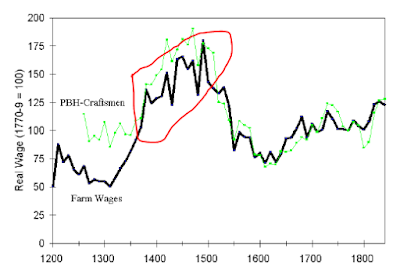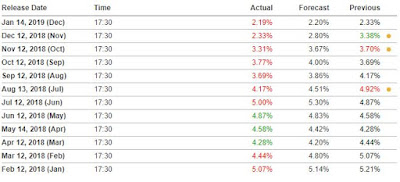Germs Inc. and the Butterfly Effect
A new strain of a CoronaVirus is reportedly wreaking havoc in China, and has supposedly spread to over ten countries (including in Europe). This virus is said to have originated in snakes or bats and tramistted to humans in the food market in Wuhan, but there is no dearth of alternative explanations as regards to the provenance of this killer.
The propensity of the Chinese to keep things bottled up is well known, and just the fact that they are opening up about this super-virus serves as a good indicator of how widespread the threat truly is. There is a nation-wide ban on wildlife trade as a result, and over 56 million people in 20 cities have been effectively quarantined via travel restrictions. While officially infections are said to be restricted to under 2,000 people, there are some reports from alleged 'whistle-blowers' who peg the number at nearly 90,000 patients.
While no one really knows how much toll this virus will extract, I do think the impact of large scale outbreaks should not be underestimated. The first example that comes to mind is the black death in England way back in the 1300s.
The black death (or plague) was carried into Europe via 12 carriers returning from Middle East/ Asia. England was particularly badly hit with 40-60% of its population estimated to have succumbed to this disease around the year 1350. Yes, half an entire country died in the Black Death. Its interesting to note that the ultimate origin of this outbreak has also been attributed by experts to China!
This sharp reduction in population directly impacted the availability of labour, which was an important factor of production back then, more than it is today. This can be gauged from the rise in wages, a chart from a study by Phelps Brown and Hopkins below:
Spooked by the jump in wages, King Edward III tried to rein them in by passing various wage control laws between 1349-1351, but they all came to naught. Ultimately, love (and market economics) will find a way. If something is scarce, it will eventually cost more, and in fact this cost is only symptomatic of an underlying disequilibrium that needs to be addressed instead of artificially controlling prices. What these artificial price controls did do is to give impetus to The Peasant's Revolt in 1381, a movement which allowed labour to rid itself of the shackles of 'serfdom' (or bonded labour).
Scarcity in a factor of production prompted the thus far subsistence farming oriented country to look at farming/ land use for profit. The War of the Roses* (1455-1485) between various Lords, had weakened the nobility, thus allowing the rise of a class of people known as the 'gentry'.
* It was so called because the opposing parties had emblems of a red, and white roses respectively.
From the gentry came the class known as 'yeomans' who were the first to adopt new technology to maximise profit from their agriculture. This is why we use the phrase ' yeoman's service' to refer to anyone who has done any pioneering work.
To make agriculture profitable, open fields were converted to enclosed fields. Till then the fields even though owned by the local manor lord, were tilled by the people who lived there. These were open strips and villages and families thrived there by farming and giving a portion of their produce to the lord to allow them to farm. But now that the small local lord or a landed gentry realised that if he wanted to make a profit, this laissez faire simply wouldn't do!
They started what was called the enclosure movement (thrived in the Tudor Period – 1485 to 1603). Now commercial crops were farmed to make money not to employ labour or feed them. Machines took the place of labour. At times,instead of grain, they used enclosures to husband herds of sheep valued for the merino wool that was being demanded by continental Europe. Were a tract of land could feed 500 was today manned by maybe a 10 workers and a dog herding sheep!
The impact of labour price inflation in pushing this need for commercial agriculture cannot be ignored. But there were a few more sources of inflation. Primarily, Henry VIII reduced the silver content in coins, increasing supply. plus new additional supply of gold from the New World increased, thus increasing inflation (money supply went up, output remained the same).
Higher inflation reduced the 'real' wealth of the nobles, and propelled them to extract further profits from their land. Increased use of mechanisation, put downward pressure on labour wages, and there were various rebellions again (Ketts Rebellion of 1549), Midlands and Newton rebellion (1607). It even prompted the ruler to pass anti enclosure acts. But they all failed, as business and profit assumed more importance than mere ownership of land for land's sake, once the nobles had a taste for profit.
In fact this dispute between the Ruler who wanted to protect interests of labour, and gentry (of whom many had become parliament members) has been touted as one of the primary reason for the English Civil War (1642-1651)!
Its not that the King did not make efforts to protect the interests of labour. He constituted something called as a 'Star Chamber' that would handle accusations made against power nobles and businessmen, that ordinary courts were too timid to touch. However even that shut down in 1641. In that sense the English Civil War was not a class struggle, but an vertical one. That is, it was fought between those nobles who thought that old way was the best and nobles who were more profit and business oriented.
The civil war ended with the execution of King Charles with part of the parliament voting in favour of the beheading and a part that was still the old school lords voting against or abstaining. The beheading of the king was done to show there is "no more divine right of kings". Monarchy was restored in 1660-1688, and a new parliament was constituted in 1688. The Reform Bill of 1888 gave the capitalists the right to vote in the parliament. Oddly, the transition of Britain from a feudal society to a parliamentary democracy was driven not by the people, but by businessmen.
But what set the ball rolling was the Yersinia pestis that traveled few 100 years prior inside the bodies of twelve sailors returning from the Middle East/ Asia, that oddly traces it roots back to China.




Comments
Post a Comment